Special Tools
| • | EN 49422 Installer |
| • | EN 49432 Locking Tool |
| • | EN 49441 Fixing Tool |
For equivalent regional tools, refer to Special Tools.
- Tighten the camshaft bearing caps 2-5 in a spiral from the inside to the outside.
- Tighten the camshaft bearing cap bolts to 8 N·m (71 lb in).
- Install the intake camshaft.
- Install the camshaft bearing cover.
- Tighten the camshaft bearing caps 2-5 in a spiral from the inside to the outside.
- Tighten the camshaft bearing cap bolts to 8 N·m (71 lb in).
- Install the exhaust camshaft.
- Install the camshaft bearing cover.
- Using a suitable tool, such as a plastic wedge, clean the first camshaft bearing support sealing surfaces and the cylinder head sealing surfaces.
- Apply green surface sealant, thinly and evenly, to the first camshaft bearing support sealing surfaces (arrows). Refer to Adhesives, Fluids, Lubricants, and Sealers for the recommended sealant.
- Position the camshaft bearing bridge on the cylinder block and hand tighten the bolts to 2 N·m (18 lb in)
- Install the 2 camshaft seal rings.
- Install the first camshaft bearing support and the 4 bolts and tighten to 8 N·m (71 lb in)..
- Insert the EN 49441 fixer .
- Turn the intake camshaft against the direction of engine rotation
- Insert the EN 49441 fixer .
- Turn the exhaust camshaft in the direction of rotation of the engine.
- Insert the EN 49441 fixer .
- Install the intake camshaft adjuster or exhaust camshaft adjuster.
- Insert the EN 49432 locking tool into the camshaft adjuster.
- Insert the EN 49432 locking tool -Left (1) and the EN 49432 locking tool -Right (2) into the camshaft adjuster, as shown.
- Hold at camshaft hexagon.
- Install the intake camshaft adjuster or exhaust camshaft adjuster and bolt. Tighten the bolts in 3 passes
- Replace the seal ring and tighten the closure bolt to 30 N·m (22 lb ft)..
Caution: Refer to Fastener Caution in the Preface section.
Note: Note the identification marking on the camshaft bearing cover.
Apply MoS 2 lubricate paste to the intake camshaft. Refer to Adhesives, Fluids, Lubricants, and Sealers for the recommended lubricate paste.
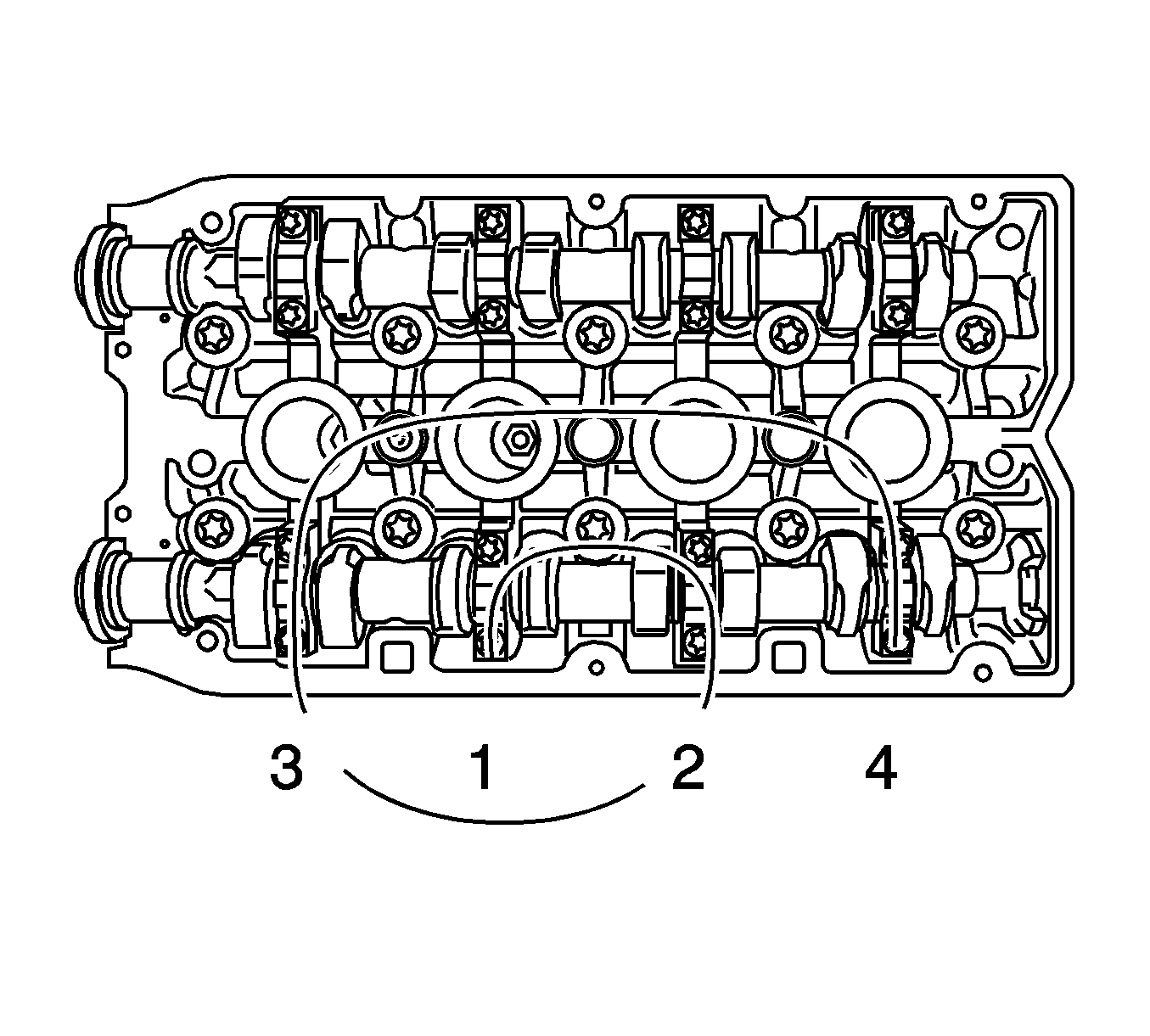
Note: Note the identification marking on the camshaft bearing cover.
Apply MoS 2 lubricate paste to the exhaust camshaft. Refer to Adhesives, Fluids, Lubricants, and Sealers for the recommended lubricate paste.
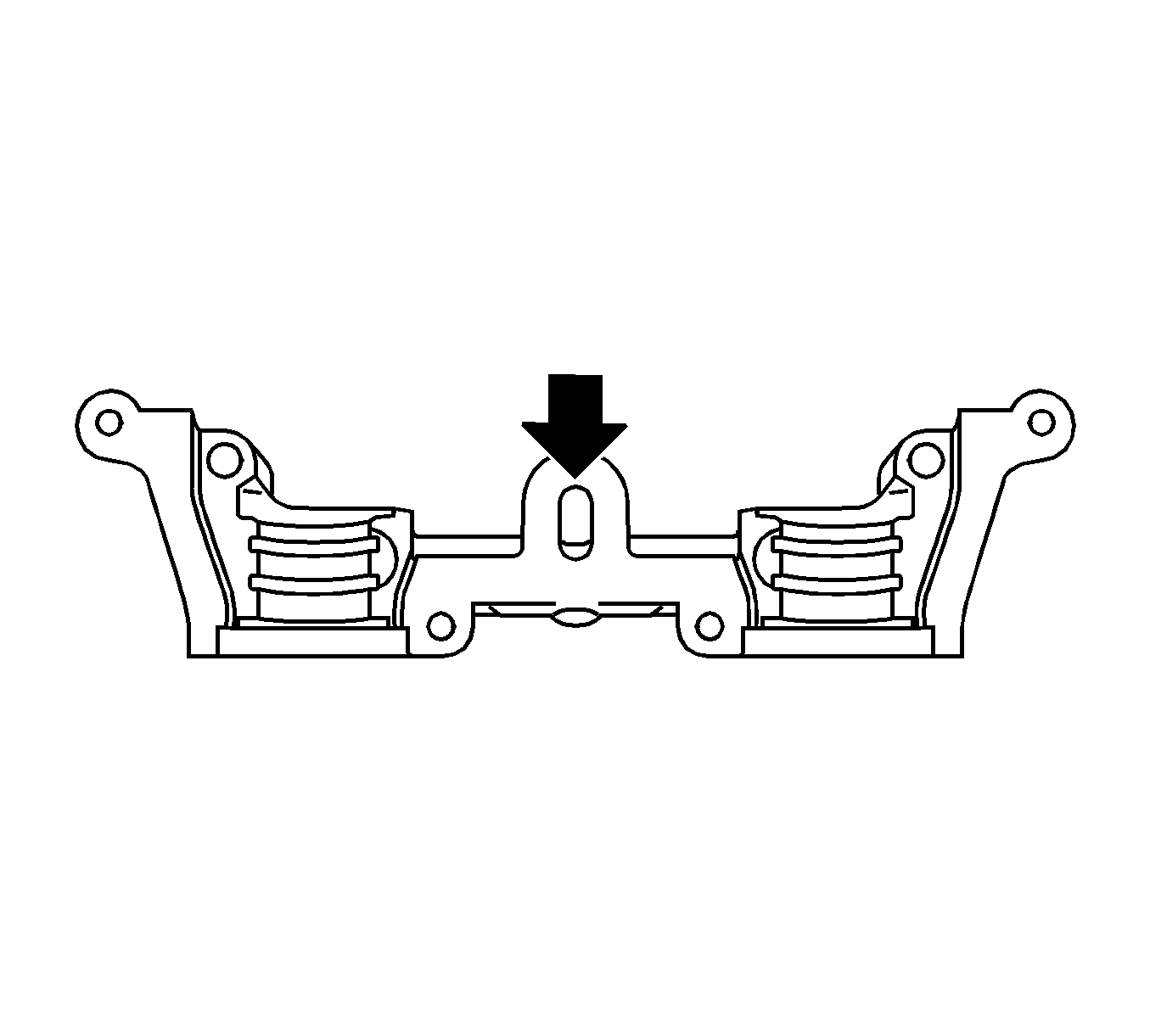
Note: Sealing surfaces must be free from oil and grease.
Clean the oil duct (arrow) from any sealant residue.
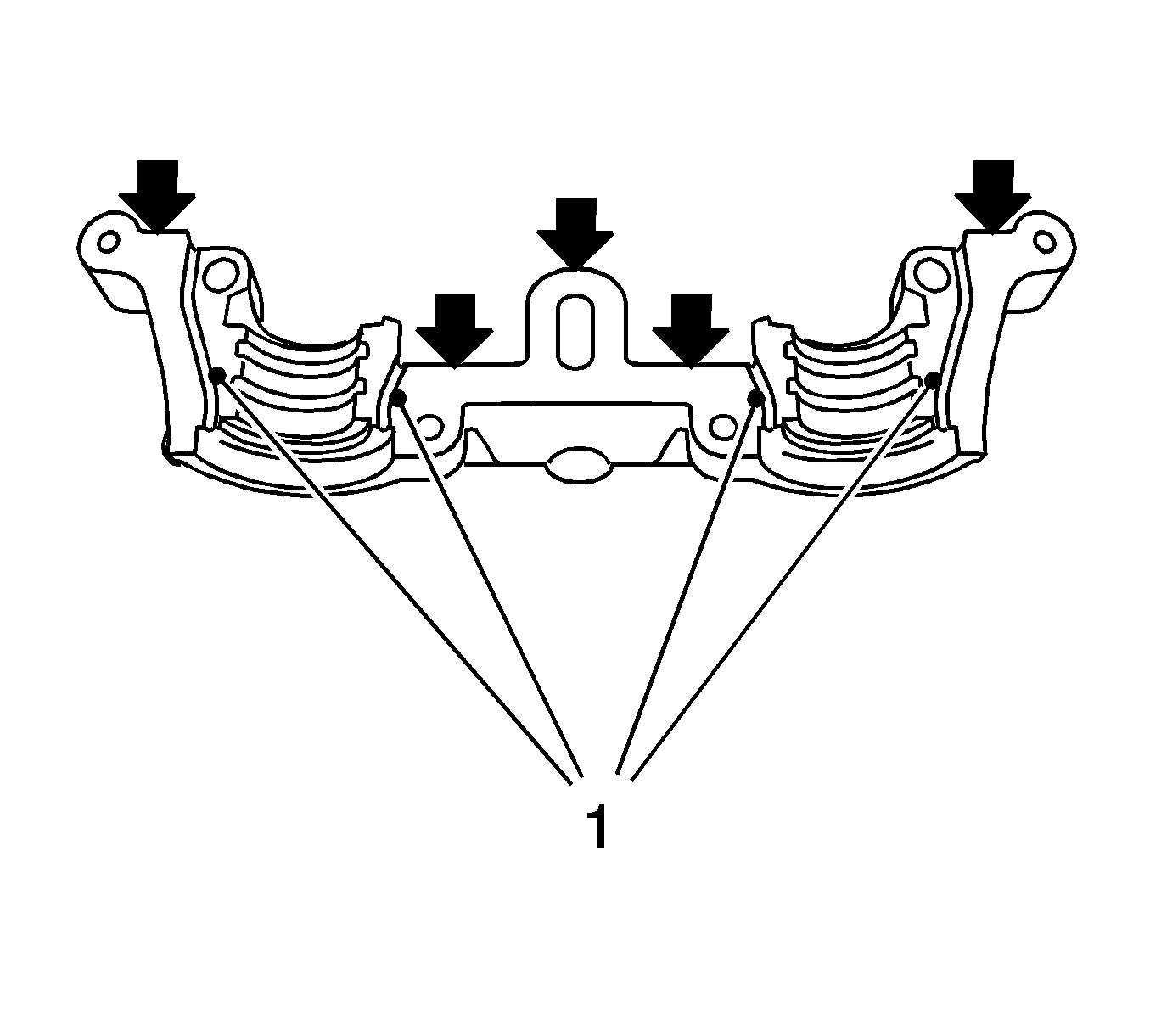
Note:
• It is essential to ensure that no sealant is applied outside the marked sealing areas. • The grooves (1) adjacent to the sealing surfaces must remain free from sealant.
Caution: Refer to Fastener Caution in the Preface section.

| 12.1. | Using the EN 49422 installer (4), tighten the seal ring on the camshaft until this is in contact with the cylinder head. |
| 12.2. | To install, use camshaft sprocket bolt (1) in conjunction with shims (2) with a total thickness of approximately 10 mm (0.39 in). |
| 12.3. | Remove the EN 49422 installer . |
| 12.4. | Remove the bolt. |
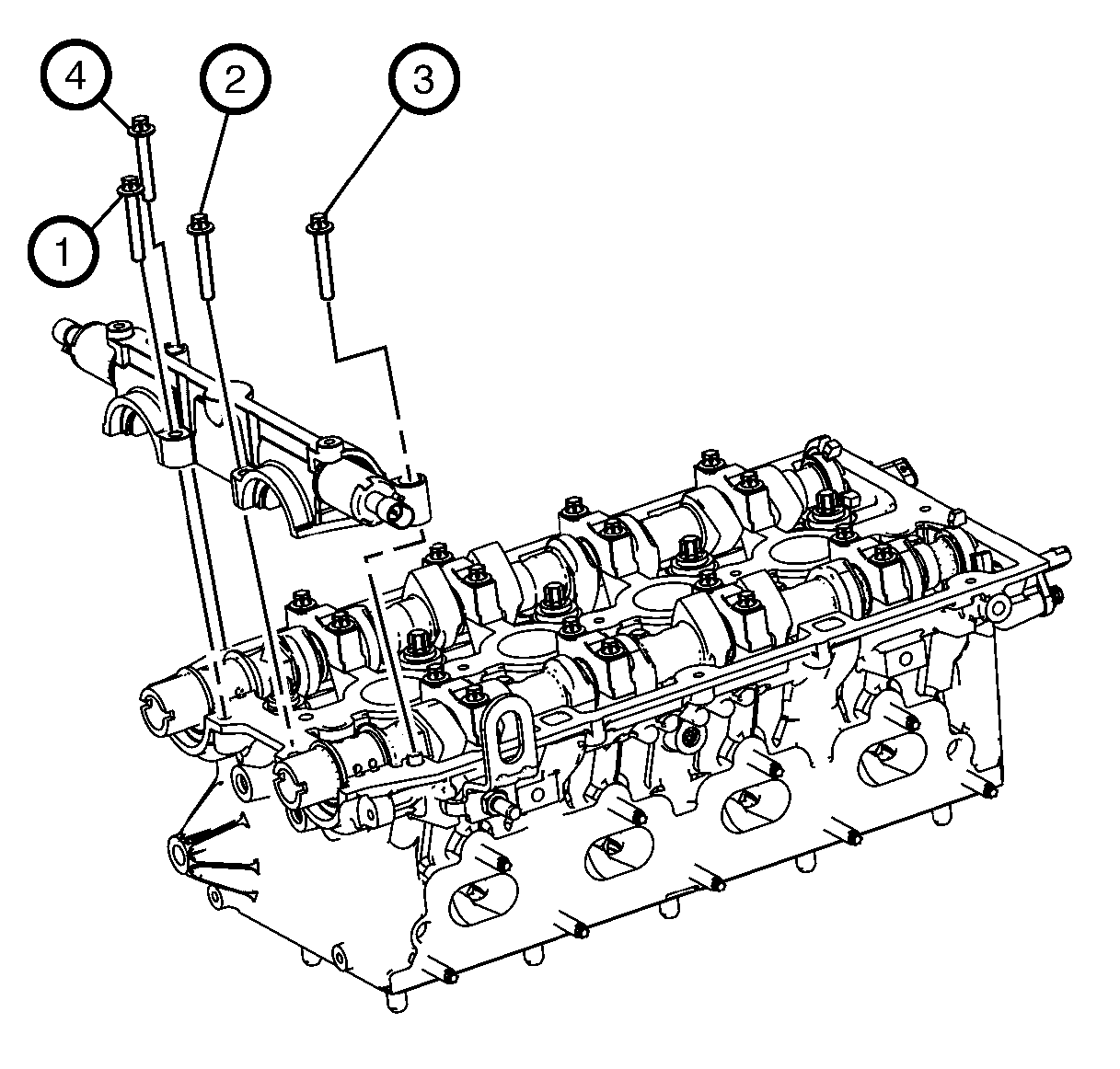
Note:
• Ensure no sealant reaches the camshafts. • Note the installation sequence 1-4.
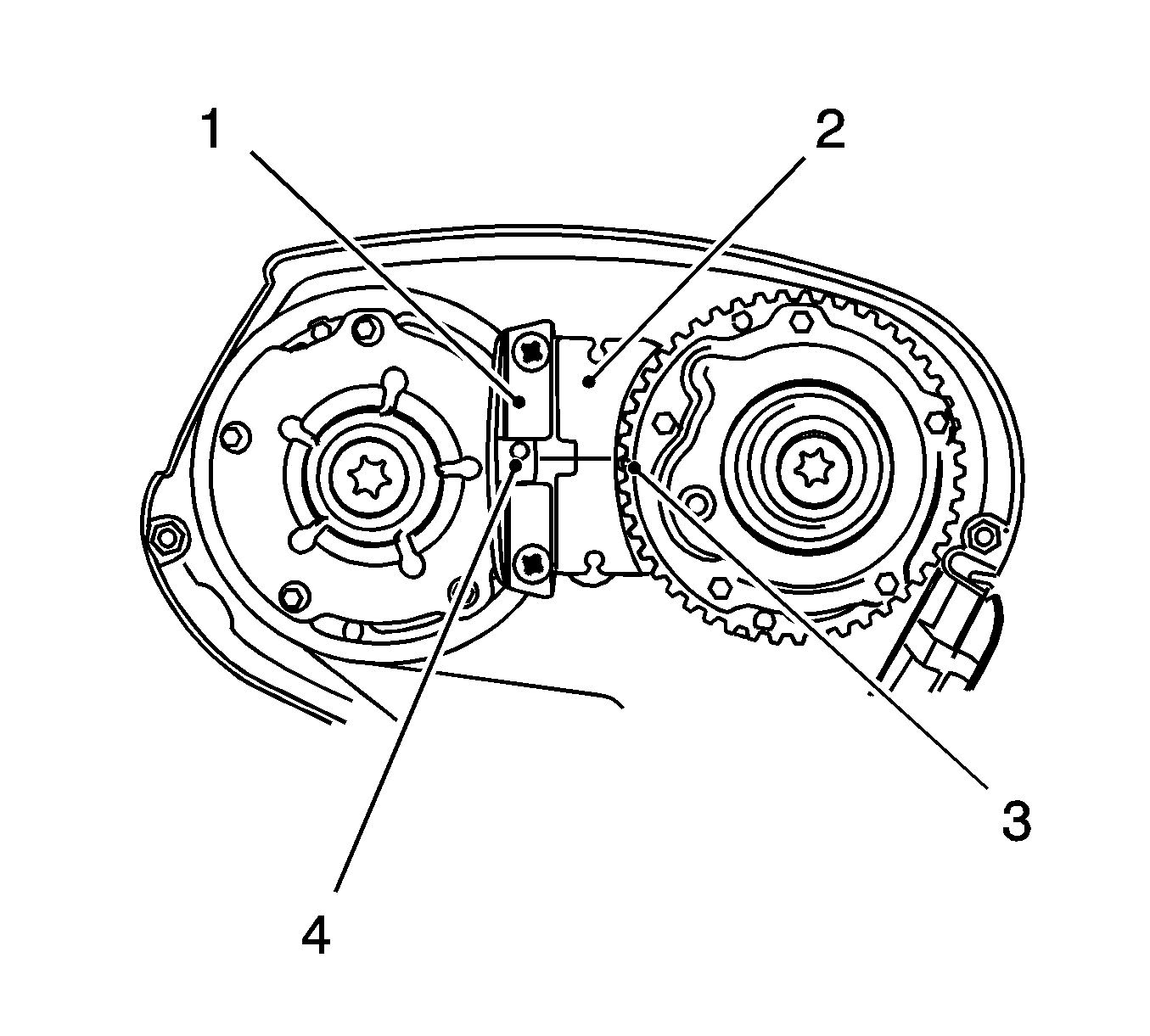
Note: Install the bolt, but DO NOT tighten the bolt.
Note:
• The spot-type marking (4) on the intake camshaft adjuster does not correspond to the groove of the
EN 49432 locking tool
-Left during this process, but must be
somewhat above, as shown. • The spot-type marking (3) on the exhaust camshaft adjuster must correspond to the groove on the
EN 49432 locking tool
-Right.
Note: A second person is required.
| • | First pass to 65 N·m (48 lb ft). |
| • | Second pass to an additional 120 degrees. |
| • | Third pass to an additional 15 degrees. |
